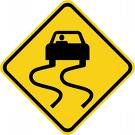First of all these high-tech systems are becoming much more common on new automobiles and even some of the less expensive models include them as standard equipment.
Find Your Online Car Repair Manual Today! ->>
This Corvette had a switch mounted in the center console just behind the shifter that allowed the driver to select touring or sport mode. The problem with this Corvette was with the electronically controlled shock absorbers. I remember that the repairs were covered under the factory warranty and that the replacement electronic shocks were a $1000 apiece. This is nice to know if you buy one of these cars used.
Kinds of electronic suspensions
Today it is more common to see the more advanced type computer-controlled suspension systems that are hydraulic rather than air controlled. The systems use high pressure hydraulic actuators to carry the vehicle’s weight rather than a conventional coil or leaf spring. This allows the suspension system to react perfectly to various operating conditions quickly.
Some of these systems are so advanced they can help the vehicle corner much like a motorcycle leans into a turn. They do this by raising the height of the outside actuators and lowering the height of the inside actuators when going around a curve. Therefore the vehicle can be made to lean in to the turn and provide almost the same effect as if you were on a high banked racing oval.
Automatic stability control
Stability control offers assistance when the automobile is going around sharp corners, braking, coasting or even during heavy acceleration. The system works by being able to apply the brake calipers individually to help change the geometry and direction of the vehicle. If the brakes are already applied but over steer or under steer is detected by on board sensor the fluid pressure to the appropriate caliper is increased to maintain the driver’s control.
It took us a while to get used to antilock brake systems and traction control technology. But they have been proven to provide a safer driving experience. Automobile safety can be improved by the deployment of electronically controlled suspension coupled with stability control systems. Over time as automotive technologies improve and manufacturing costs come down we may even see them as government mandated standard safety equipment in the near future.
Stop by and see the new articles that are posted on the online auto repair blog about once a week. On the right-hand sidebar archived articles are available and broken down into a few descriptive categories. Feel free to look around for the information you need to fix your own car or just learn more about an automotive subject. Specific auto repair help for individual vehicles is available on the homepage for online auto repair.



